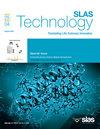Application of ATR-FTIR spectroscopy and multivariate statistical analysis in cancer diagnosis
IF 2.5
4区 医学
Q3 BIOCHEMICAL RESEARCH METHODS
引用次数: 0
Abstract
Lung cancer is one of the most prevalent and lethal malignant tumors worldwide. Currently, clinical diagnosis primarily relies on chest X-ray examinations, histopathological analysis, and the detection of tumor markers in blood. However, each of these methods has inherent limitations. The current study aims to explore novel diagnostic approaches for lung cancer by employing attenuated total reflection-Fourier transform infrared (ATR-FTIR) spectroscopy in conjunction with multiple machine learning models. Fourier transform infrared spectroscopy can detect subtle differences in the material structures that reflect the carcinogenic process between lung cancer tissues and normal tissues. By applying principal component analysis (PCA) and partial least squares discriminant analysis (PLS-DA) to analyze infrared spectral data, these subtle differences can be amplified. The study revealed that the combination of spectral bands within the 3500–3000 cm-1 and 1600–1500 cm-1 ranges is particularly significant for differentiating between the two groups. Three classification models—Support Vector Machine (SVM), k-Nearest Neighbor (kNN), and Linear Discriminant Analysis (LDA)—were constructed for spectral analysis of various band combinations. The results indicated that in detecting lung cancer samples, the combination of the 3500–3000 cm-1 and 1600–1500 cm-1 bands offers significant advantages. The analysis of the receiver operating characteristic (ROC) curve demonstrated that the area under the curve (AUC) exceeded 0.95 for all models, with the LDA model achieving an accuracy rate of 99.4% in identifying lung cancer patients compared to healthy individuals. The findings suggest that the integration of ATR-FTIR spectroscopy with multiple machine learning models represents a promising auxiliary diagnostic method for clinical lung cancer diagnosis, enabling detection at the molecular level.
求助全文
约1分钟内获得全文
求助全文
来源期刊

SLAS Technology
Computer Science-Computer Science Applications
CiteScore
6.30
自引率
7.40%
发文量
47
审稿时长
106 days
期刊介绍:
SLAS Technology emphasizes scientific and technical advances that enable and improve life sciences research and development; drug-delivery; diagnostics; biomedical and molecular imaging; and personalized and precision medicine. This includes high-throughput and other laboratory automation technologies; micro/nanotechnologies; analytical, separation and quantitative techniques; synthetic chemistry and biology; informatics (data analysis, statistics, bio, genomic and chemoinformatics); and more.
 求助内容:
求助内容: 应助结果提醒方式:
应助结果提醒方式:


